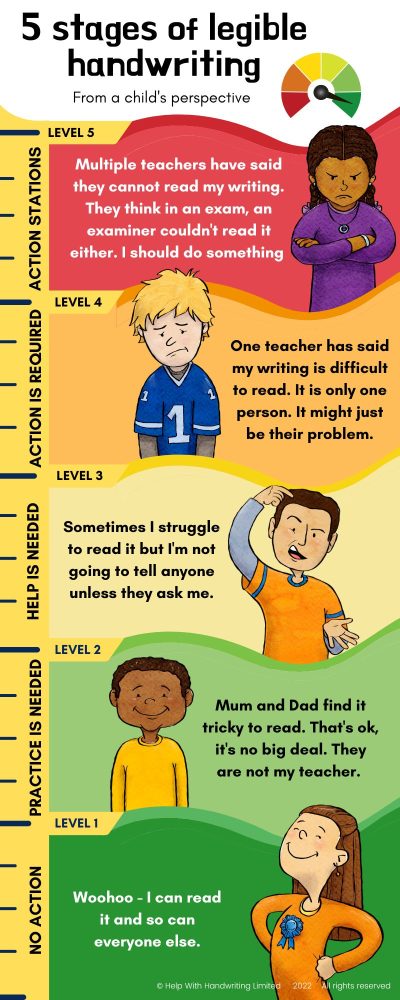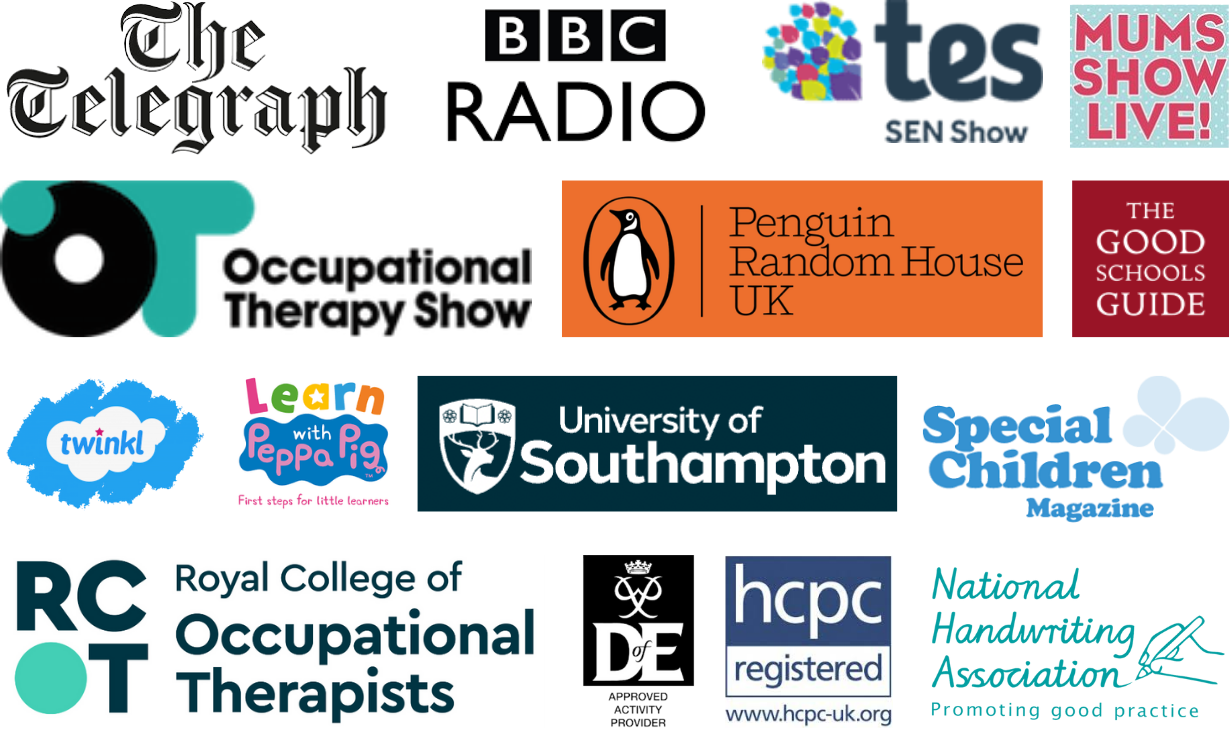Everyone strives for legible handwriting. But the question should we should be asking is "What is illegible handwriting?"
For a child seeking legible handwriting, it is confusing.
Let’s think about this as levels or stages. This will help us understand why some students do not belive they have illegible handwriting.

⬅️ By the time that we get to level five we’re thinking serious action is on the cards. The risk of grades going down. Work being unmarked. A child’s true knowledge not being assessed comes to the forefront.

⬅️ Level three writers secretly know that their writing is tricky to read. Yet they wouldn’t like to admit it and will only do so if someone asks them in the right way.
⬅️ Level two writers can often hear from their parents that their writing is tricky to read. However if their teacher has not said anything to them then they do not think it needs looking at and improving on.
⬅️ Level one writers find that everything they write is readable to others.
Other more common words to describe illegible handwriting are messy, scrawl and scribbles.
There are many ways in which someone with illegible handwriting can turn it around.
Pen
Paper
Most line widths are 8mm in line height. Yet for some students, this is too small. They may prefer writing in a notepad that has a 10 mm line width.
Word space gaps
If the writing is difficult to read increasing the word space gap can be helpful. Forget the concept of finger spaces think about a word space gap being a 5 mm measurement. If this is too small for your child encourage them to have a 7 or 8-mm gap.
Letter sizing
This is crucial the ascenders and descenders need to be clear. Ascenders stand tall but they do not go up to the top of the line they go up to 90% of the line height. The letters that sit on the lines e.g. e, a, n, o, c, and v need to be 50% of the line height.
Before we can look at helping a child improve their ”illegible” handwriting, we have to understand what they believe about their handwriting.
If they feel it doesn’t need changing it is going to be very difficult to encourage them to make changes. If they have heard one teacher make a comment about it. It is wise to explain that this is often the English teacher because it is their role to look at writing. Other teachers may also find the handwriting difficult to read but they may not have said it. When we have their agreement, then it can be all systems go to improve it.









